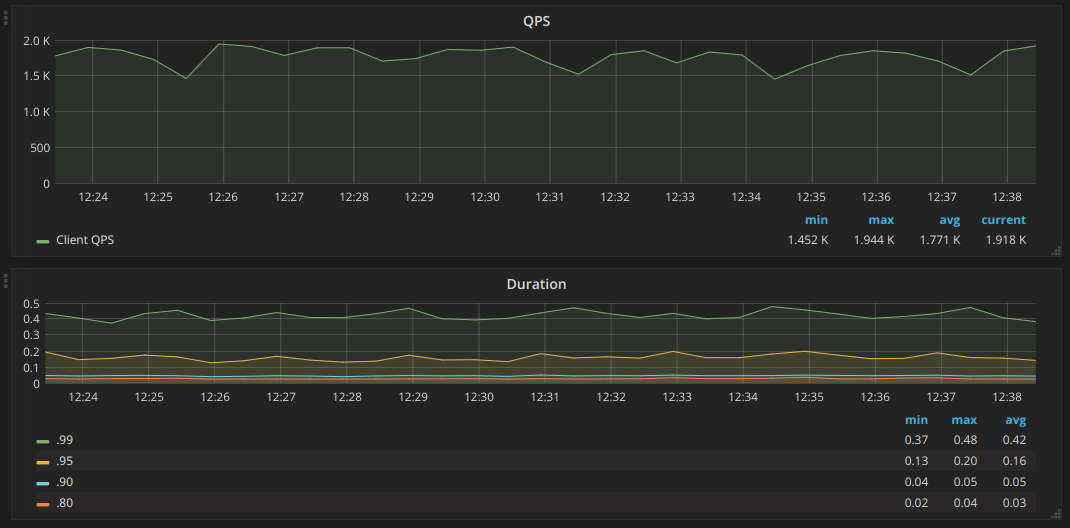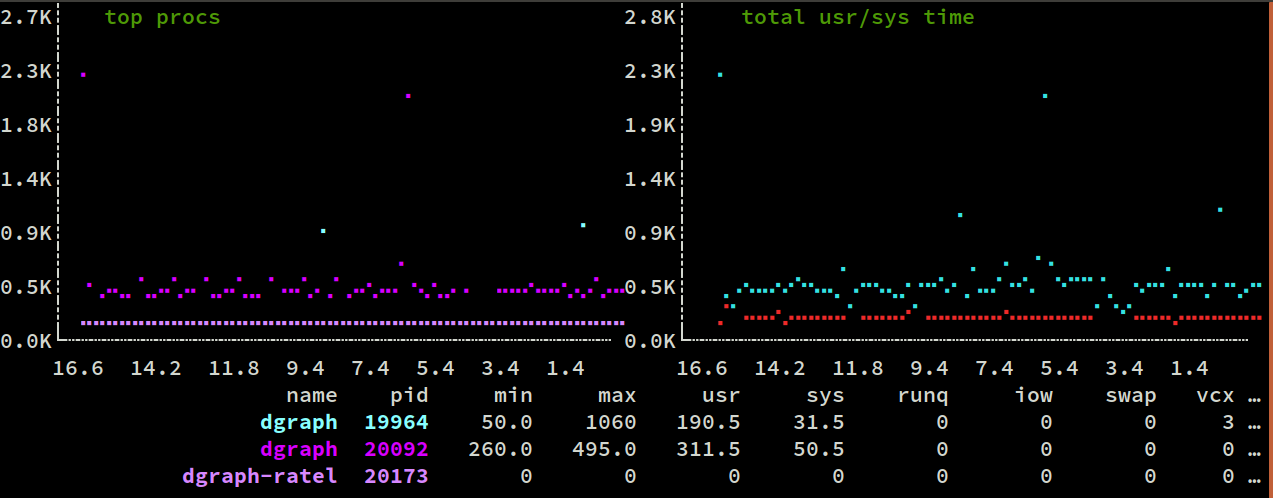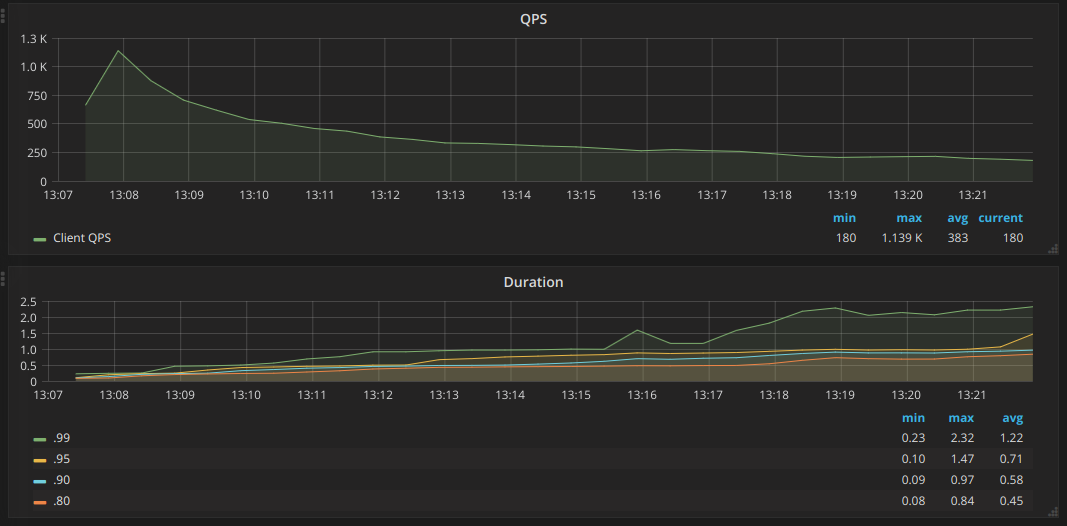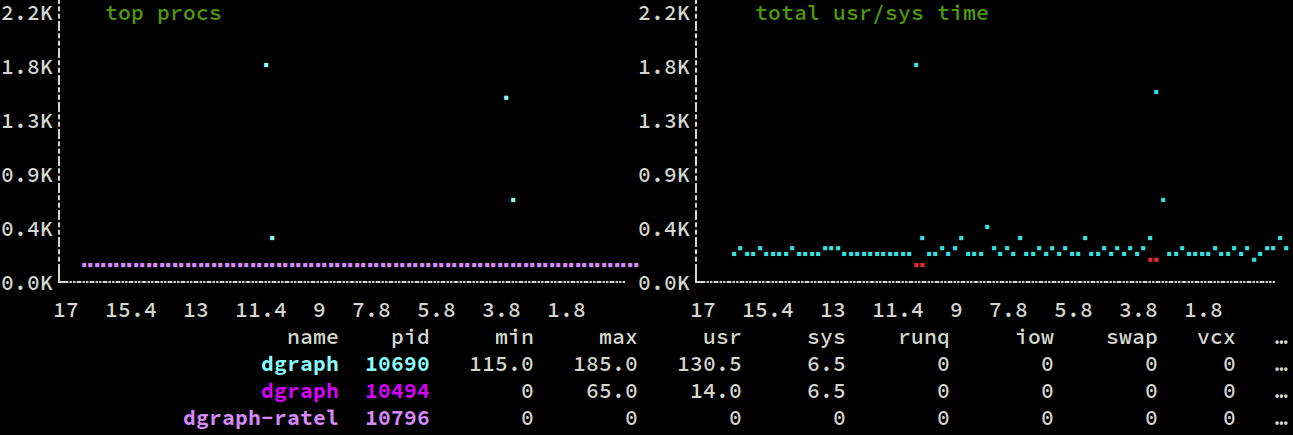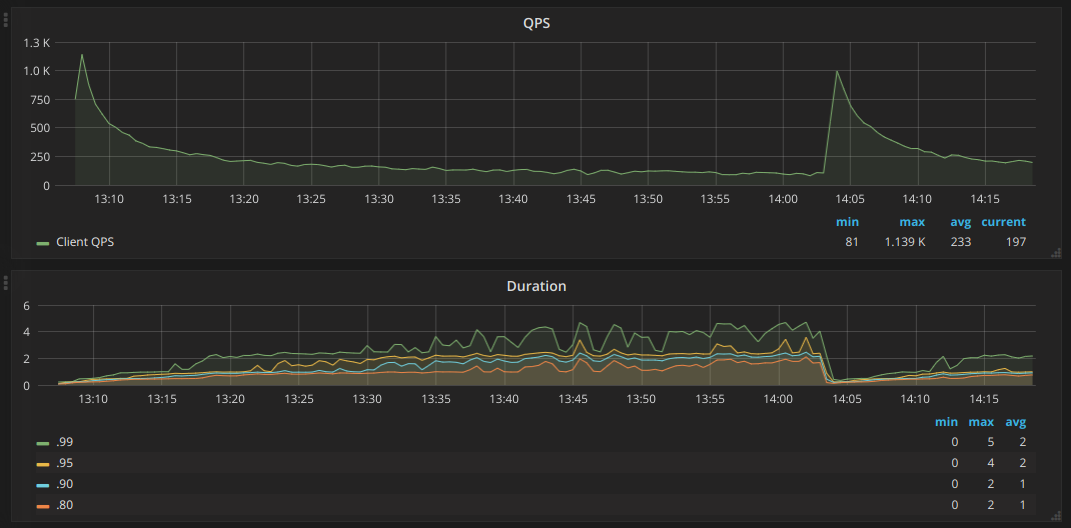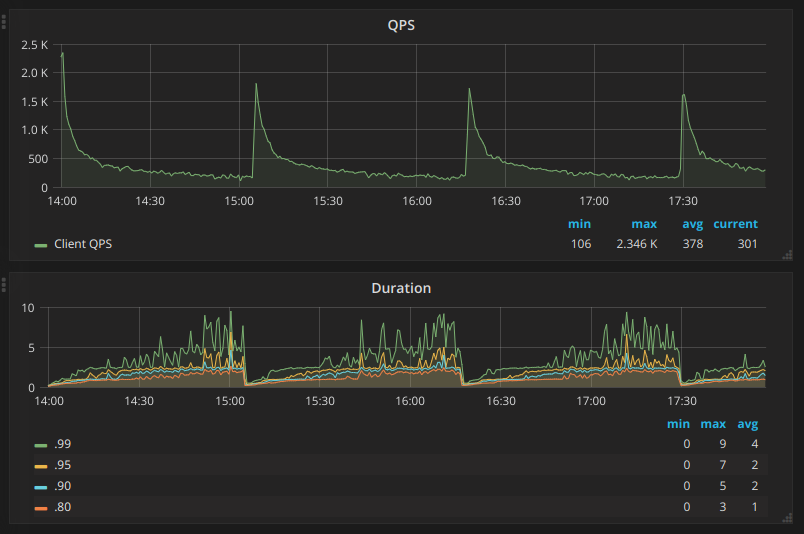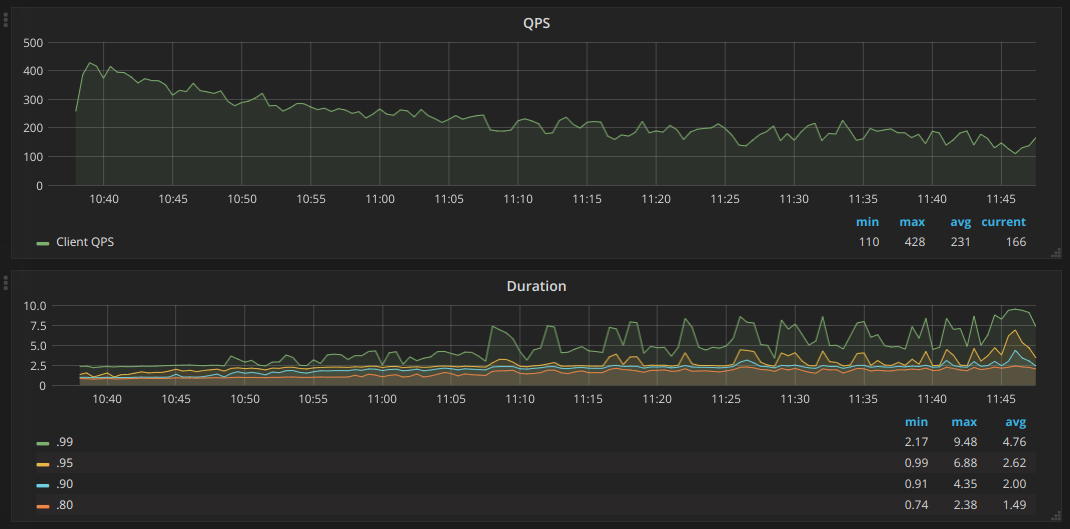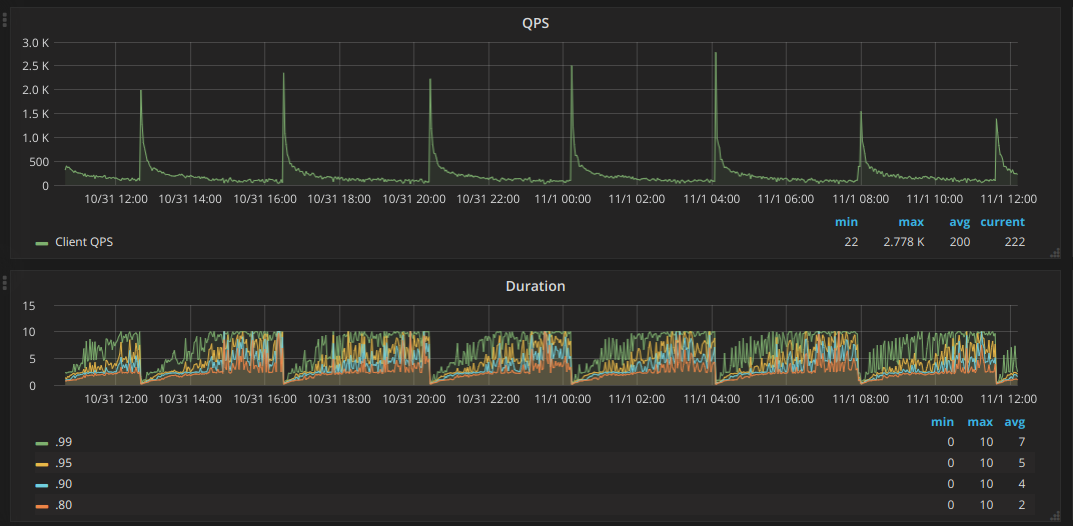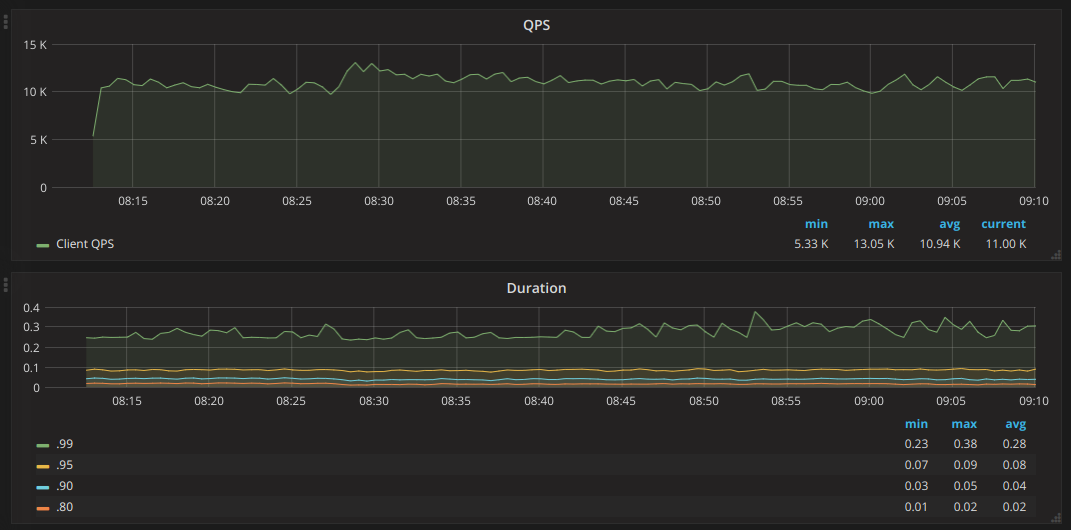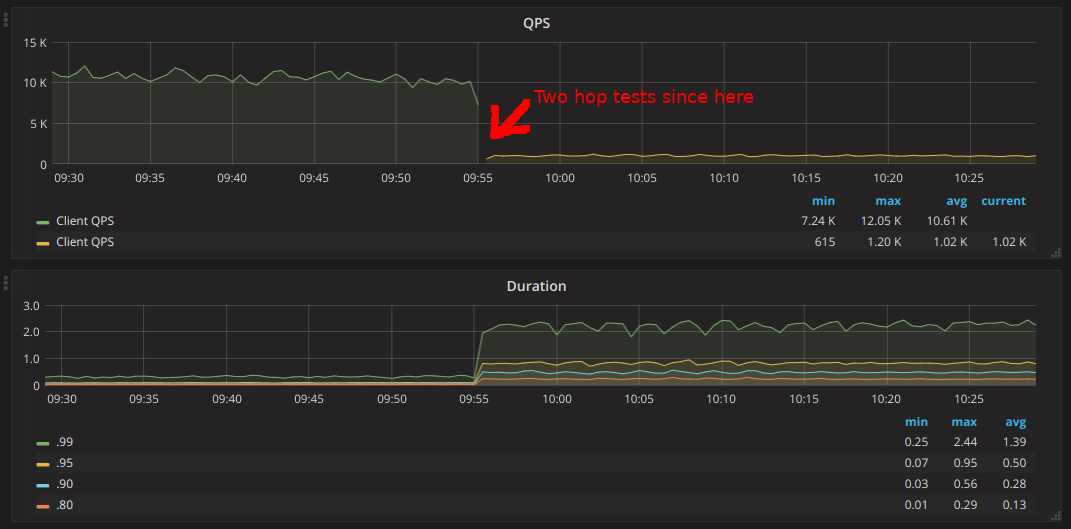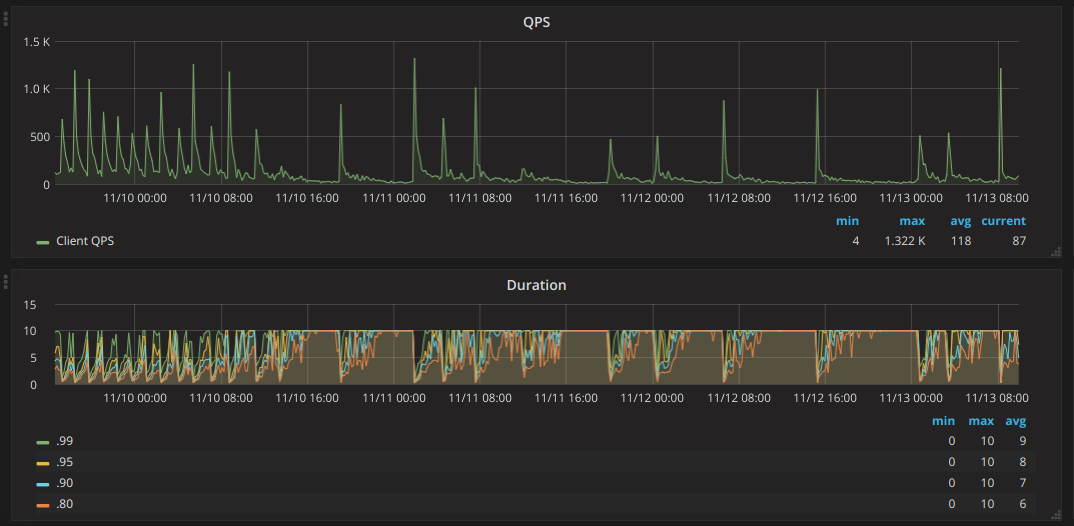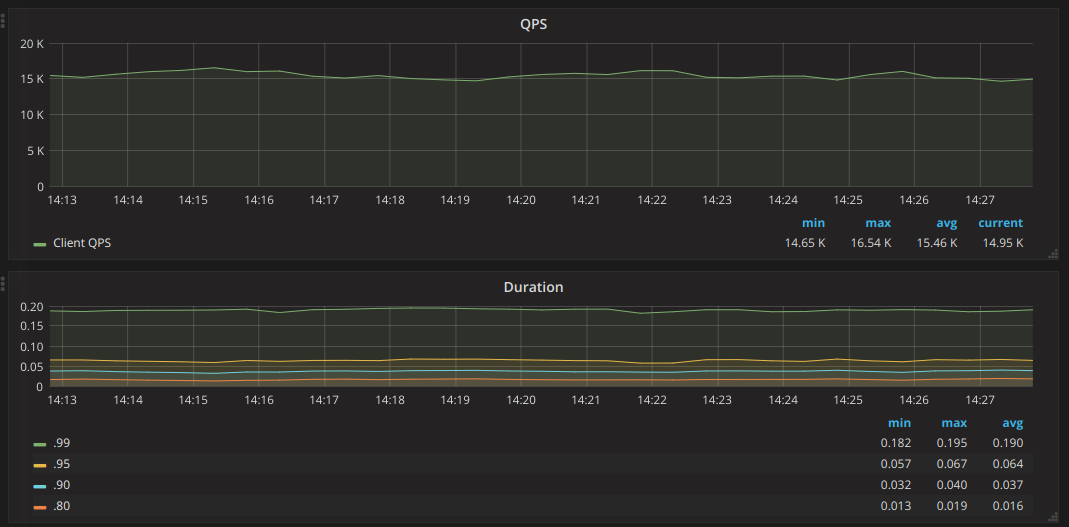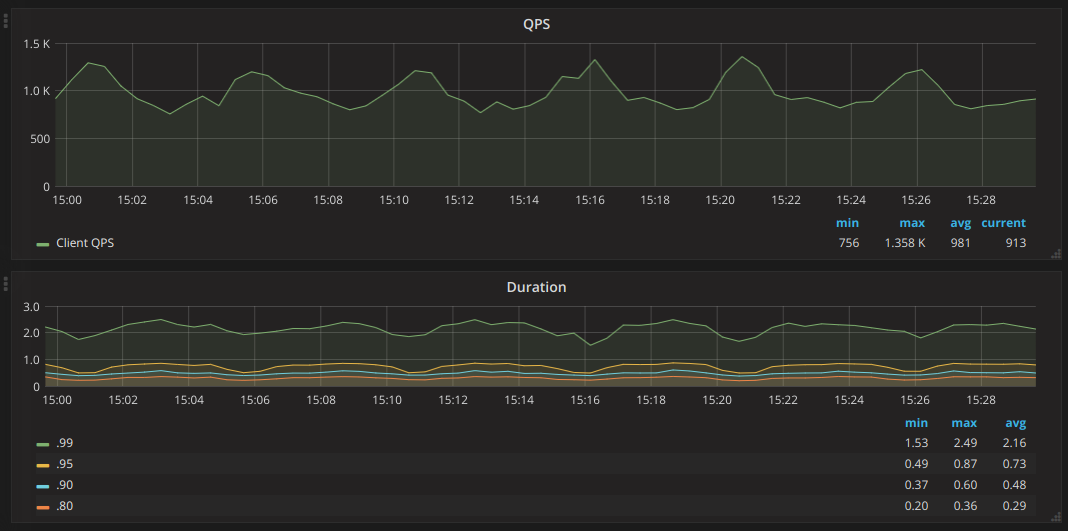A benchmark program for dgraph.
Dgraph team recently benchmark the current setup against the latest release v20.11.0. You can check out the results posted at their Discuss Channel. Much of the performance bottleneck in version v1.0.x have been improved over time.
All tests are on servers with multi-way Intel(R) Xeon(R) CPU E5-2630 v3 @ 2.40GHz, 32 virtual cores on each server.
Each server has 64G memory, and a 500GB SATA SSD:
| Parameter | Evaluation |
|---|---|
| Max Sequential Read | 560 MBps |
| Max Sequential Write | 530 MBps |
| 4KB Random Read | 95,000 IOPS |
| 4KB Random Write | 84,000 IOPS |
Af the first step, we tried to insert single node into dgraph, in different cluster configurations.
The performance is not bad, considered that the concurrency is 100 and there is a 20ms cool down for each call. Meanwhile the CPU load is low:
Now we see a poor performance. The CPU load is still not high:
Machine 1 (with zero and ratel):
Machine 2 and 3:
After one hour of running, we noticed a performance jump, followed by the same performance drop.
We see a clear pattern in which the performance jump up followed by a exponential drop down.
Before testing edge insertion, we inserted 3.3+ million people nodes to dgraph. In this test, it picks randomly two persons, then connects them as friends.
The edge insertion is also slow, with a continuous descreasing trend. As always, the server side CPU load is rather low.
In 25 hours it inserts 8+ million edges:
Note that the QPS jumps up every four hours followed by an exponential drop.
In summary, dgraph's insertion performance is not so good.
To test Dgraph's query ability, we generated 10,000,000 person nodes, for each of them we randomly generated N edges with randomly picked people, where N is governed with a exponential decay curve:
N(t) = N0 * e-k*t
N0 = 1000. So the numbers of friends of most of people are below 20, but some people will have a few hundreds of friends. The total edges all together exceeds 500,000,000.
Since it will be very slow to insert these many nodes and edges in Dgraph, we used dgraph bulk loader to load the generated RDF file.
The query performance of Dgraph is superb. For one-hop friends query, it can easily handle 10k QPS on 100 concurrent request workers at ~300ms 99 percentile and 80ms 95 percentile. On two-hop friends query, dgraph provides ~1000 QPS on ~0.95s 95% percentile.
Dgraph aims to provide a highly available and highly scalable graph database, but in the latest version (1.0.9) we only see it succeed on read queries. Its write performance is low and unstable. This result is quite surprising, because as a LSMT data store it's expected to be good at write over read. On the contrary, its read performance is much better.
Our tests also show that when mixed with writes, the read performance degrades severely.
So at present, we prefer not use Dgraph for OLTP applications, or at least those with heavy writes. And we hope Dgraph team increase its write performance in future releases.
5 days continuous insertion. 19166000 nodes inserted.
Compared to v1.0.9, the throughput increases about 50%.
On this test, v1.0.10 provides same level of throughput.
